Motorcycle Investor mag
Subscribe to our free email news
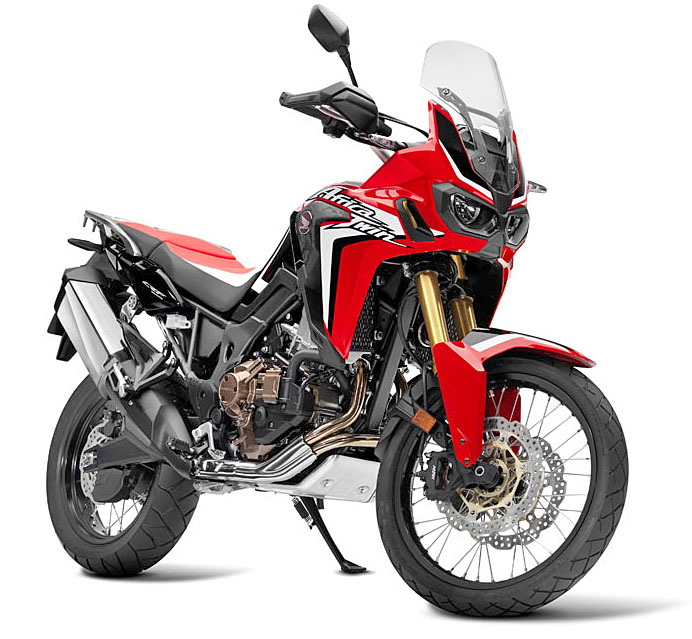
Future collectible – Honda Africa twin
August 2020
Across Africa
by Guy 'Guido' Allen
Though still more or less the new kid on the block, Honda’s late-model Africa Twin adventure tourer has potential as a collector piece
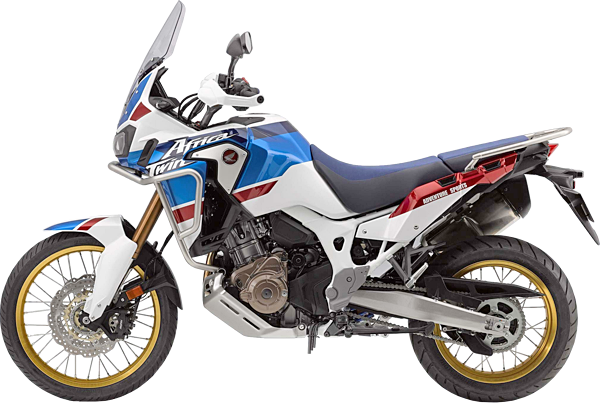
Few people realise it these days, but there was a period in time when Honda ruled the infamous Paris-Dakar raid, then easily the world’s toughest off-road rally. Now known as the Dakar, it ran from Europe to Africa and suffered a huge attrition rate in 1979, its first year. Just 74 of the original 182 vehicles made the full distance.
Relatively little-known in Australia in its early years, it was wildly popular in Europe and became a huge marketing opportunity for motorcycle makers. Yamaha in fact won the first race, with Cyril Neveu in the saddle of an XT500, and this became the inspiration for the Tenere series, named after the African desert.
BMW, which scored its first victory in 1981, eventually got on the bandwagon with its P-D variants of the GS series.
Honda’s first victory came in 1982, with Neveu on an XR550. But it was the four years on the trot from 1986 to 1989 that was truly impressive and became the well-justified bragging rights for the Africa Twin series. Neveu gave them the first two wins on an HRC-developed NXR750V V-twin, while Edi Orioli and Giles Lalay handled the next two years on the NXR800V.
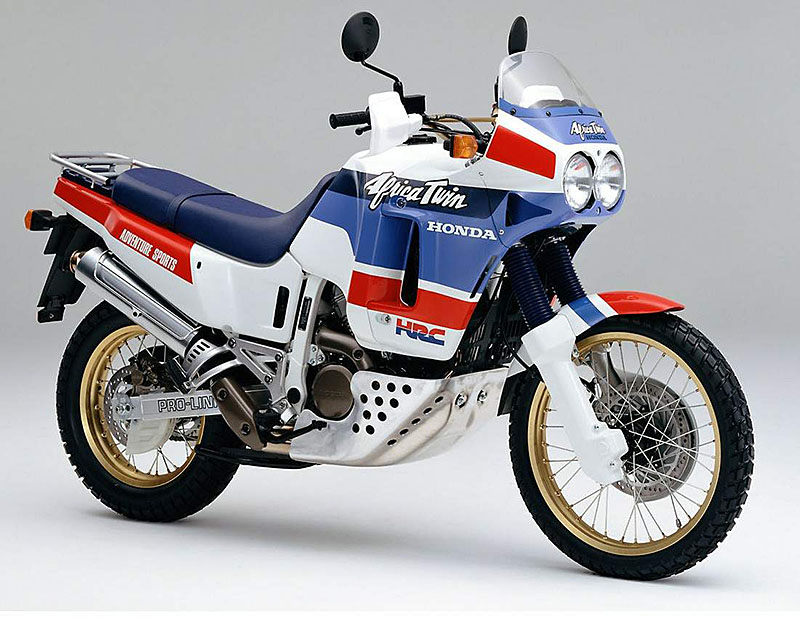
As a consequence of all of this, Honda announced the first road-going Africa twin, the XRV650 (above), in 1987 for the 1988 model year. Though in a much milder state of tune than its racing stablemates, it drew a clear visual connection and was based loosely on the successful original XL600V Transalp. That meant a 52-degree V-twin powerplant with three valves per cylinder claiming around 57 horses (42kW).
That model morphed into the XRV750 two years later and was sold in various forms all the way through to 2003. Except in Australia – here we got the Transalp and then Varadero, but not the far more interesting Africa Twin. Any early Africa Twin in the local market will be a grey import and of great interest to local collectors – particularly if it’s the original 650. Overseas, good examples are fetching over $20,000.
In some respects this probably highlights how far removed the current Africa Twin is from its original namesake. Designated the CRF1000, the current Africa Twin is a one-litre parallel twin boasting a solid 95 horses (70kW) and – depending on the variant you ordered – bristling with electronics its eighties namesake could only dream of.
Launched for the 2016 model year, the fuel injected new-gen adventure cruiser runs a six-speed transmission and chain drive.
That lot hangs from a steel frame with a 45mm USD fork up front and rear monoshock.
The big surprise was the range of variants offered from the word go. You could have the plain Jane version, one with ABS, or one with ABS and a dual-clutch transmission with on- or off-road riding modes. Inclusion of the push-button DCT on an adventure tourer was taking the bike into new territory, but it made some sort of sense.
To keep the range fresh, Honda announced a couple of Adventure Sport variants for 2018, with more suspension travel, an extra 5.4lt fuel capacity (for 24.2lt), heated handgrips as standard and a nudge bar on the fairing. The icing on the cake was a colour scheme that claimed to be a tribute to the original Africa twin, though the connection seems tenuous.
Since we mentioned electronics, it’s worth mentioning that in addition to the fly-by-wire throttle and ABS, there is an adjustable traction control available.
What all that says is you have a bit to wade through when it comes to buying one of these new or used, as the variants have become plentiful in a very short space of time.
Overall, the feedback on this model has probably been everything Honda could have hoped for. The engine is unquestionably the highlight. Though a long way from being the most powerful or biggest capacity unit in this market, it has a reputation for delivering ample power at pretty much any rev range and for a nice linear progression.
The general consensus is that the series has respectable dirt road and even off-road ability, given that it’s no lightweight at something nearing 230-250kg wet, depending on which variant you’re riding.
Without doubt the inclusion of a DCT in the range is the most controversial feature and your response will depend on what you’re looking for in the bike. If the use is primarily sealed road with the odd dirt track thrown in, and you just want an easy fuss-free ride, it makes sense.
Surprisingly, it’s not the easiest thing on the planet to work on. Access to the air filters (there are two) is fiddly and owners recommend you get your head around the process before you head off on a long and dusty trip. Even access to the minimal toolkit has been cause for grizzles.
Servicing is otherwise typical Honda, with 24,000km intervals between major work such as valve lash. Evidently access to the top of the engine requires removal of the fairing and fuel tank, but is not particularly difficult. Disregard what you read on internet forums about a 7-8 hours labour requirement. It’s nonsense as this includes cool-down time for the engine! The actual time on the spanners is a fraction of that.
So why buy one? Of the big adventure twin offerings out there, it’s among the most agile and the vast majority of owners have walked away very happy with what they’ve scored.
It’s not often we tackle a still-current model in Future Collectibles, but this is one of those exceptions where you can see potential fairly early in the life of the model.
Prices are all over the place at the moment, with used early bikes being offered from around $12k, all the way up to $20k-ish plus ORC for a new Adventure Sport. It’s way too early to expect to make any money out of any of the variants, though I’d be confident in saying there will always be an audience for a good used one.
If you were buying with an eye to eventual collectability, my choice would be the 30th anniversary Adventure Sport with manual transmission.
In the meantime you’d be well advised to do exactly what it says on the tin, and go out looking for an adventure…
***
HONDA’S FIRST ADVENTURE TOURERS
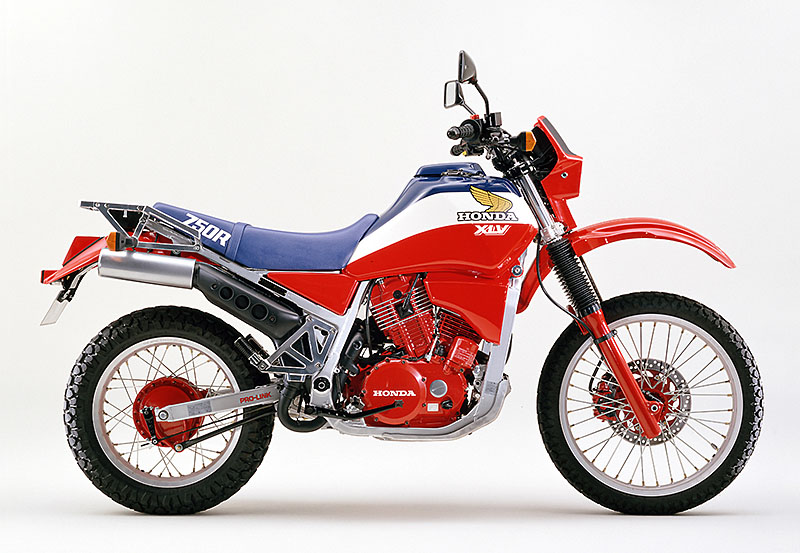
If you disregard the scramblers of the sixties and early seventies, Honda’s first entry into the world of adventure tourers was the XLV750R (above). It debuted at the Paris Motor Show in 1982 for the 1983 model year.
At the time it was an innovative thing, with a 45-degree V-twin engine, three valves per cylinder, hydraulic valve lash and shaft drive. Weighing 220 kilos wet, it was a substantial motorcycle.
The big XLV was really a ‘soft-roader’, that was more touring bike than anything else, pitched at the European mainland market.
Its successor, the slightly detuned XLV750R (F) of 1985 appeared in much more muted red and black or blue and black colour schemes and was sold locally in small numbers.
Honda’s next pitch at this market was the more nimble and successful 1987 XL600V Transalp.
RUGGED ROADS
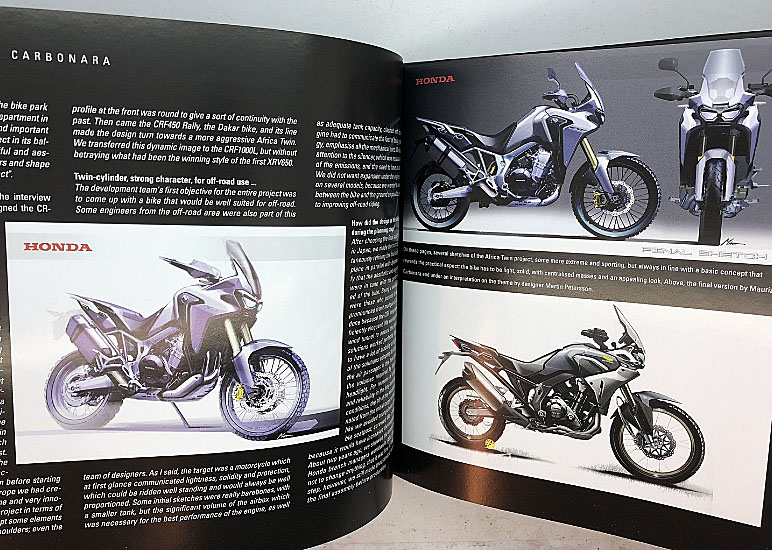
Honda released a limited edition hardbound book with the new-gen Africa Twin in 2016. Called Rugged Roads (above), it traced the history of the company’s Paris-Dakar models, from the XLV750R through to the CRF series. Evidently it was included in the deal for the first 800 European buyers of the CRF1000.
-------------------------------------------------
Produced by AllMoto abn 61 400 694 722
Privacy: we do not collect cookies or any other data.

Archives
Contact



